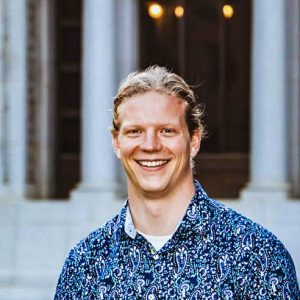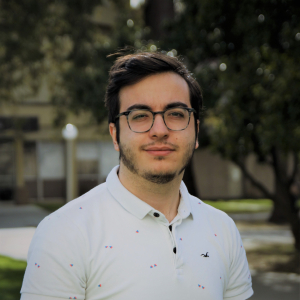
Payton Goodrich is a PhD candidate at UC Berkeley with Dr. Ana Arias and Dr. Tarek Zohdi working on the model-based design of printed electronics and agricultural sensors. He received his B.S. in Mechanical Engineering from Iowa State University in 2015 and his M.S. in Mechanical Engineering from UC Berkeley in 2018. His research interests are in printed electronics, wearable devices, and environmental sensors.

Omar is a PhD student in Mechanical Engineering co-advised by Prof. Tarek Zohdi and Prof. Kosa Goucher-Lambert. His research interests include the use of agent-based modeling/simulation and optimization. He graduated from Boise State University with a B.S. in Mechanical engineering.

Emre is a Mechanical Engineering PhD student at UC Berkeley advised by Prof. Zohdi. He has a B.S. degree in Mechanical Engineering and Aerospace Science & Engineering from UC Davis. Emre’s previous research experience includes Direct Energy Deposition process optimization and powder flow visualization for additive manufacturing processes. His research interests include manufacturing process optimization and computational modeling of manufacturing systems.

Roger is a Ph.D. student in Mechanical Engineering with a B.S. in Mechanical Engineering from UC Berkeley. His previous research experience is in photocuring manufacturing processes and mechanical testing of additively manufactured specimens.
Precision agriculture offers a pathway to increase crop yield while simultaneously reducing agriculture’s water consumption, carbon footprint, and the leaching of chemicals into groundwater. Accurate soil data is crucial information for precision agriculture, and geostatistically accurate soil data can be collected with agricultural sensors spaced at the half the spatial range. Here, we propose using this spacing as the effective coverage radius of a sensor node to find the optimal placement of soil moisture and nitrate sensors. To efficiently scan each sensor multiple times throughout the growing season, we propose using a drone swarm for which each drone path is optimized using a genetic algorithm to tune the attraction and repulsion forces between sensors and obstacles. In addition, MLA allows us to optimize agricultural land use. Conventional solar panels do not incentivize switching to agrophotovoltaic production, thus we are working to optimize panel position & activation of energy storage units depending on ambient parameters to reduce the impact of solar panels on crop growth. We can also maximize land use efficiency through optimized solar farm and greenhouse designs for location and plant specific applications.